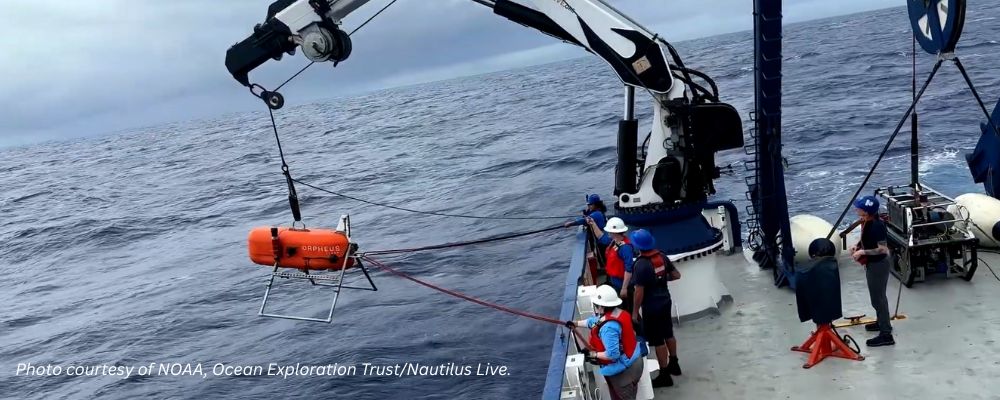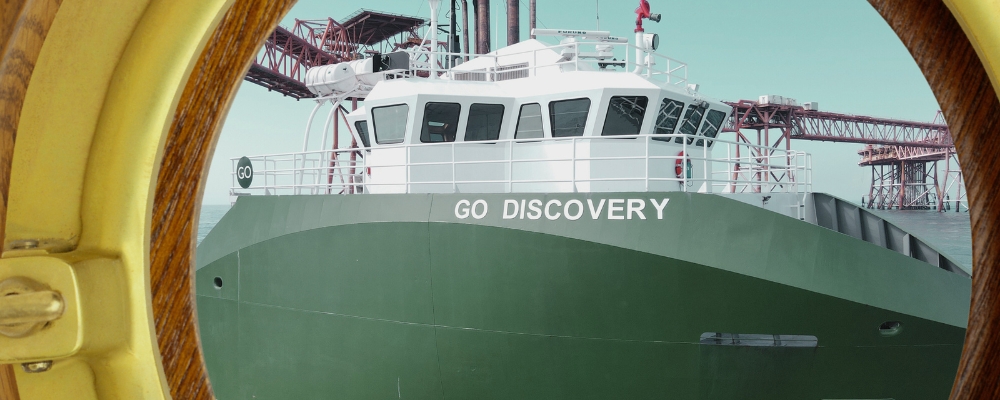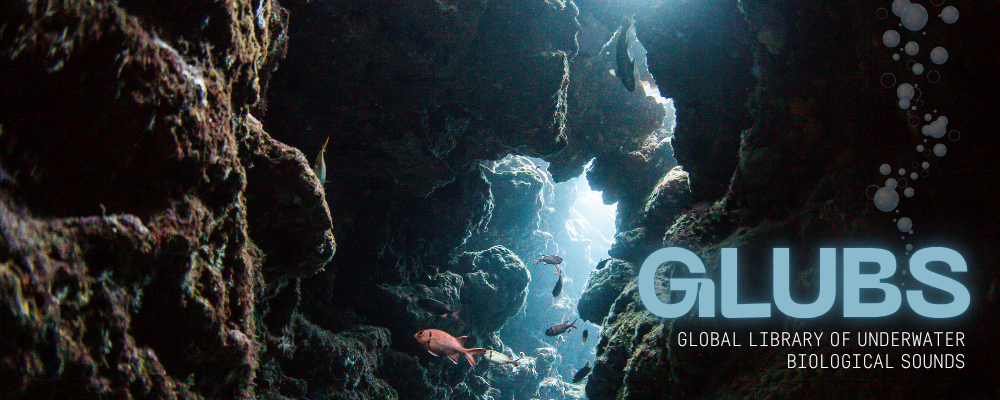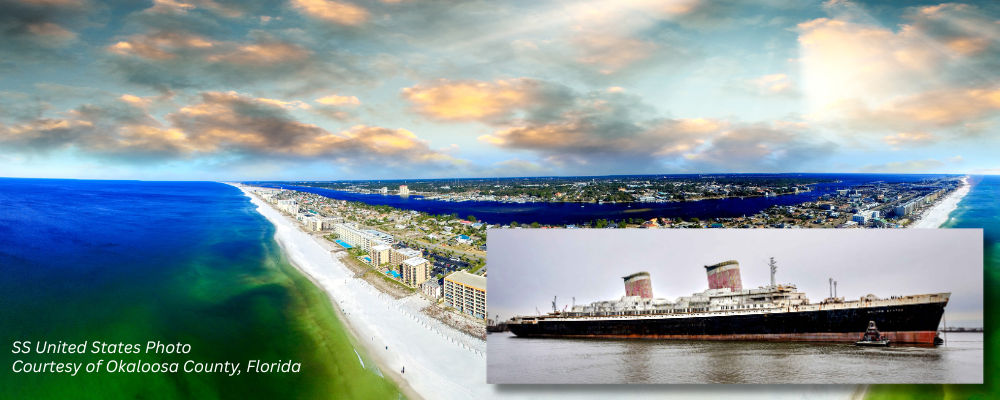During a recent expedition led by the Ocean Exploration Cooperative Institute (OECI), which is based at the University of Rhode Island’s Graduate School of Oceanography, together with support from NOAA Ocean Exploration (NOAA), the Bureau of Ocean Energy Management (BOEM), and the U.S. Geological Survey (USGS), testing of a new autonomous underwater vehicle (AUV) resulted in advancement to uncrewed systems technologies and the collection of images of manganese nodule-covered seafloor in ultra-deep waters near the Mariana Trench, the deepest part of the Earth’s oceans located in the western Pacific Ocean east of the Mariana Islands.
Built by New England-based startup Orpheus Ocean , the small-footprint “Orpheus AUV” is advancing our understanding of some of the planet’s least explored regions at water depths up to 11,000 meters (6.8 miles). These areas include geological settings that may contain marine critical minerals such as polymetallic nodules, which are of interest to marine scientists, resource managers, and industry.
Field-testing of the new AUV took place during an expedition on Ocean Exploration Trust’s Exploration Vessel Nautilus east of the Mariana Trench. The vehicle successfully completed several dives to depths exceeding meters (3.5 miles), imaging polymetallic nodules on the seafloor during two dives. This marked the first direct observations of these sites and helped NOAA, USGS, and BOEM refine their understanding of the resources that they are tasked with characterizing and managing. Nautilus has played a key role in mapping and exploring the U.S. Outer Continental Shelf in the Central and West Pacific Ocean in collaboration with NOAA and the OECI.
Interest in understanding deep-ocean areas that may host marine critical mineral deposits has highlighted how little we know about these deposits and the deep sea, which is still largely unexplored. Collecting seafloor data, observations, and samples that are necessary for understanding and managing these resources is made challenging by the extreme water depths, great distances from shore, and the cold temperatures and high pressures at the seabed. The OECI has worked together with NOAA, BOEM, and USGS to better understand the unique and remote areas of the deep sea. Recently, their combined efforts have focused on environments and geological features that may contain polymetallic nodules.
“It is critical to collect the data that allows us to understand the distribution of deep sea mineral deposits and the unique ecosystems associated with them. OECI is perfectly situated to collaborate with Federal agencies and the private sector to advance important deep sea technologies. The greatest need right now is baseline data, which requires very specialized tools” said Adam Soule, University of Rhode Island Graduate School of Oceanography professor of oceanography and OECI executive director.
Orpheus technology provided the first direct observations of these sites, which were selected by USGS experts who predicted that nodules would likely be found in the area. “In order to responsibly manage the deep sea and its resources, we must leverage public-private partnerships and emerging technologies to gather critical baseline information about the seafloor,” said Aurora Elmore, NOAA Ocean Exploration program manager.
“The abyssal plain visited on this mission is one of the least-known areas on Earth. The data and images compiled help us to refine our seafloor prospectivity maps. Mission by mission, we are filling in the details of the map and building knowledge of where seafloor minerals may be found and their geologic and oceanographic setting,” said Amy Gartman, lead of the USGS Global Seabed Mineral Resources Project.
A predecessor to Orpheus Ocean’s AUV was originally developed by the Woods Hole Oceanographic Institution (WHOI) and NASA’s Jet Propulsion Laboratory, and its evolution from prototype to operational vehicle has been supported over several years by NOAA Ocean Exploration and OECI.
Orpheus Ocean, a startup company founded in 2024, aims to expand access to these unique, small-footprint robots to supercharge our ability to collect meaningful data that can ensure sound policy decisions about these unique environments. “Orpheus Ocean prioritizes work with government, research institutions, and other groups dedicated to advancing science, conservation, and understanding of the deep ocean, and this expedition is a great example of that,” said Jake Russell, CEO and co-founder of Orpheus Ocean.
Since its formation in 2019, OECI has been led by the University of Rhode Island’s Graduate School of Oceanography in collaboration with WHOI, OET, the University of New Hampshire, and the University of Southern Mississippi. The collective ability to develop and test new technology, partner with industry, advance ocean science, and develop the next generation blue economy workforce has been central to the success of this partnership.
“NOAA’s partnership with OECI has provided a strong return on investment. The ability to quickly mobilize assets to address national priorities, such as examining critical minerals in U.S. waters, reflects the benefits of building a strong, collaborative foundation of resources, experience, and expertise,” commented acting NOAA Ocean Exploration Director Captain Bill Mowitt.
About the Ocean Exploration Cooperative Institute (OECI)
The OECI works with NOAA Ocean Exploration, other NOAA offices and programs, and other federal agencies to support national priorities in US waters. The OECI partners collaborate with their federal sponsors, academic and non-profit research organizations, and industrial and commercial partners to develop and provide novel solutions to the challenging work of exploring the deep sea. All OECI data that is collected is made publicly available to advance science and assist federal partners in responsible ocean management and use.
About Orpheus Ocean
Orpheus Ocean is a technology company dedicated to changing how humanity explores and protects the deep ocean. Founded in 2024 and built upon decades of oceanographic experience, Orpheus Ocean develops, constructs, and operates AUVs that enable scalable access to seafloor environments.
About National Oceanic and Atmospheric Administration Ocean Exploration
NOAA Ocean Exploration is the only federal program dedicated to exploring the unknown ocean, unlocking its potential through scientific discovery, technological advancements, partnerships, data delivery, and education. By leading national efforts to fill gaps in basic understanding of the deep-ocean environment, we are providing critical data, information, and awareness needed to protect American livelihoods, strengthen national security, and promote a vibrant U.S. economy.
About the USGS Global Seabed Mineral Resources project
The Global Seabed Mineral Resources project studies deep ocean minerals that occur within the U.S. Exclusive Economic Zone and areas beyond national jurisdictions. Our research concerns the setting, genesis, and metal enrichment processes of mineral occurrences, the relationship between marine minerals and deep-sea biota, and the potential geochemical footprint of any seafloor mining. We aim to provide stakeholders with the best available science regarding potential resources and environmental impacts associated with accessing those resources.



